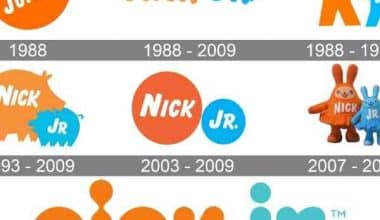Businesses strive to attract customers by combining brand, marketing, and social media customer retention strategies. Earning the trust of your clients has taken a lot of your time, effort, and probably money. It is only standard for you to desire to keep them. It would help if you considered your entire customer experience and understood the various examples of customer retention strategies.
This experience includes all customers’ thoughts and feelings about your brand. One or more factors influencing a customer’s relationship with a brand include customer-facing interactions, such as handling support tickets or how a brand communicates its values.
What is Customer Retention?
Businesses use customer retention as a metric to assess overall success and track changes in customer loyalty. It shows whether your service and product are satisfactory to customers. Additionally, it is essential to most subscription-based businesses and service providers.
Businesses use a variety of strategies to improve customer experiences and increase customer retention by lowering the number of customers who leave the company in a given time frame.
Increasing a company’s rate of repeat customers and getting more value out of those customers is known as customer retention. Customer retention aims to keep customers returning for more, being happy with a company’s services, and staying put rather than switching to a rival.
Customer Retention Strategies
Companies implement these procedures and programs to strengthen client loyalty and increase client lifetime value. However, keeping customers involves more than just business dealings; it involves building relationships. Customers prefer brands that are reliable, authentic, and aware of what matters to them.
To increase your existing customers’ brand loyalty, build strong buyer relationships with them. Even if other options are available, they will still choose your brand. With this devoted following, your brand will have a better chance of surviving volatile markets.
For instance, after a customer complains about an order problem or delay, a customer marketing team may use customer service data to send an apology email and a discount code.
The following customer retention techniques can increase retention rates:
#1. Creating a Solid Onboarding Experience
Your company has the chance to make a lasting first impression when a customer makes their first purchase, so make sure your onboarding procedure runs like a well-oiled machine. Any customer service hiccups during initial onboarding, such as handling of information incorrectly or lack of a designated point of contact to guide them through the process, will probably stick in the customer’s memory. Even though your company can quickly resolve those points of contention, it might still leave the customer with a negative impression.
The effectiveness of the onboarding process itself should be a part of a suitable onboarding procedure and superior customer service. To entice and impress new customers, your company should have workflows with timed email triggers, follow-up messaging, and celebratory messaging.
#2. Build Trust with your Customers.
When establishing a relationship of trust with your clients, remember that it takes time and that you shouldn’t take their purchases for granted. Businesses must implement a universal strategy to build trust over time. Since “trust” refers to “a firm belief in the reliability, ability, and strength of someone or something,” it makes sense that businesses should earn it.
Your company should provide value to customers because reliability is a crucial component in developing trust. Keeping your brand promise will have a positive effect and increase its credibility.
#3. Deliver Fast Support
Swift responses help resolve disputes more quickly. However, when the business can’t fix a ticket immediately, always get back to the customer as soon as possible. A brief message informing the customer that you have received their inquiries can serve as a quick response. However, give a timeline for resolving their issues. If your clients know you’re making every effort to meet their timeline expectations, they will be willing to wait.
Also, offer faster delivery. People dislike having to wait too long for their orders to be delivered. According to recently released data, shipping delays cause nearly half of the shoppers to abandon shopping carts.
#4. Personalize Interactions
When a customer must repeatedly explain a problem, they become irritated. Customers are more likely to leave after prolonged, tedious interactions.
#5. Invest in Employees
Create various forms for support requests and ticket fields. Customers will receive a customized paper that asks questions about their issues. Then use support software to streamline the procedure. The use of support software will route ticket types to agents with specialized knowledge. You’ll increase customer retention and make agents happier.
#6. Meet Customers Where They Are
Avoid limiting your support options to just one or two techniques. Give customers various contact support methods, including web, mobile apps, email, phone, and chat. Customers can then carry on the conversation through any additional channel.
#7. Gather Customer Feedback
Customer feedback is one of the most effective tools for lowering churn rates and raising customer retention. Getting the information directly from the source is beneficial if you want to understand what is and is not working for your customers. By conducting more surveys, you can give customers a voice.
Asking for a “thumbs up” or down after resolving a ticket can serve as a simple customer satisfaction survey. Ask questions that can get to the heart of the customer’s efforts. For instance, due to its convenience, customers frequently favor self-service. You could therefore use surveys to ascertain whether your customers appreciate your self-service options or whether you’re making it too challenging for them to find the required solutions.
#8. Encourage Loyalty
Rewarding loyal customers can achieve increased customer retention. Customers prefer it when brands show them appreciation and give them reasons to stay. Loyalty programs, promo codes, and special deals are effective incentives. These will encourage customers to keep making purchases from your company.
In addition to rewarding customers, a loyalty program can offer a satisfying and personalized experience based on sales insights. The retention of customers depends on both factors.
A referral program uses your current clients to recommend potential new clients to your business. Typically, this includes a bonus, like a coupon code or value-matching offer.
A company newsletter can improve your company’s reputation and notoriety, making it an easy and affordable way to keep customers. Email automation can send updates or deals to your clients at once.
Additionally, you can schedule the frequency at which the email delivers using an RSS feed, eliminating the need for manual content updates and the need to remember to hit “send.” Despite being straightforward, newsletters can serve as constant brand reminders for customers.
#10. Start a Customer Education Program.
A customer education program demonstrates a long-term commitment to your customer base. Your business creates various customer self-service tools as part of this initiative, including a knowledge base and a help desk. Customers then use these features to look up solutions to service issues before contacting your support staff. However, this strategy has become well-established for maximizing client success.
Examples of Customer Retention Strategies
The various examples of excellent customer retention strategies implemented by great companies include:
#1. Amazon’s Provision of a Seamless Online Experience
Meeting customer expectations is among the simplest examples of customer retention strategies. Additionally, customers now demand online experiences that are even better than those they can get offline. 65% of customers prefer to do business with companies that allow for quick and simple online transactions. Because of this, Amazon receives one of the highest service ratings and is one of the best examples of companies with good customer retention strategies.
It’s unusual for a company with a commodity-based business model to incorporate a subscription service, which Amazon created in the form of Prime. Initially, Amazon developed the subscription to offer customers faster delivery. Although it caused a lot of controversies, it quickly gained favor with platform regulars. Another cost-effective way to use this strategy is to offer rewards through premium content and events.
#2. CashApp Incorporates Itself into Users’ Lifestyles.
Your business could inspire the market and entice customers to associate with your brand. You can incorporate your product into their way of life. Their business strategy is straightforward: they profit from a small fee that clients pay when depositing into their bank accounts. But how exactly do they keep these users returning to send and receive money via the Cash App?
It’s not a mystery how they manage to keep their customers. The lifestyle connected to the app is where the magic is. A Cash App requires at least two users—one to send money and the other to receive it. As long as the app is easily accessible on phones and at least one other person we know uses it, we’re likely to remain customers for much longer than we ever imagined. CashApp is considered one of the examples of customer retention strategies.
#3. Canva’s “Offer a Solution to a Specific Problem, not Every Problem.”
When Canva first entered the graphic design market, they were up against some of the most well-known names in the sector. They were the tiny fish swimming in the large pond. At least in every household that deals with technology and marketing, they are now a household name.
Over the past few years, Canva’s business has gained new clients and kept hold of existing ones by resolving the issue of providing non-designers with easy-to-use professional design tools. Almost anyone can pick up one of Canva’s ready-to-use templates, icons, elements, images, and fonts and produce a masterpiece. The systems and tools that Canva develops empower individuals. It effectively addresses a significant issue to the best of its ability.
#4. Provide Convenience for Customers: Starbucks
Your product or service should be easy to use, regardless of the industry your company operates. Starbucks, the world’s largest coffee company, has always used creative marketing strategies, particularly in customer acquisition. The app’s Mobile Order & Pay feature is one of their most innovative strategies for keeping customers.
Customers can use the feature to place their coffee orders before they even get to the shop. Starbucks can be referred to as one of the examples of customer retention strategies. So make your goods and services as easily accessible as you can.
#5. Form a Community Around your Product or Service: Flo
Gaining a following for your products or services can persuade potential clients to profit. Flo provides a top-notch platform that forecasts, examines, and keeps track of the personal health information of people who want to manage their health. The app provides a calendar so users can see when their cycles start and end quickly, and it also offers daily health insights to help make sense of all those forecasts.
The community of the app sets Flo apart from its competitors and promotes user retention. Each user pairs with a virtual health assistant through Flo, and the platform even offers anonymous chat rooms where users can privately discuss their health concerns. Forming a community around your product is one of the great examples of customer retention strategies that can work for your business.
What Is a KPI for Customer Retention?
KPIs, or key performance indicators, are numerical measurements that determine how many customers have remained loyal to your product. The performance of business operations over a specified period uses various formulas that use these units of measurement.
#1. Repeat Customer Rate
To measure customer retention by the percentage of returning customers. It calculates the proportion of clients willing to buy from you. Assessing your repeat purchase rate is a great way to determine your retention strategy. Customers are more likely to visit your store if this metric is higher.
The calculation of the repeat purchase ratio is as follows: Number of returning customers/ total customers.
#2. Churn Rate
The percentage of people who have stopped using your services over a specific period is your customer churn rate. Your customer churn rate should be kept as low as possible. However, it would be best if you first ascertained your rate.
However, if your annual churn rate is higher than 5–7%, it’s time to assess your customers’ satisfaction and identify the issue. A churn rate is typically a sign that your product or service isn’t living up to the expectations or objectives of your customers. Churn Rate Formula:
Annual Churn Rate = (Number of Customers at the Start of the Year – Number of Customers at the End of the Year) / Total Number of Customers.
#3. Customer Lifetime Value
This KPI measures the revenue generated by a single customer. Calculating a life value: First, figure out the typical revenue you can anticipate from a client for a year. This sum is determined by dividing your annual gross sales by the total number of distinct clients you served that year. The time a customer stays with your business should be determined second. Finally, to choose your customer lifetime value, multiply the average revenue per customer by the typical customer lifespan.
Calculate Customer Lifetime Value by dividing the value of the customer by the average customer lifespan.
#4. Purchase Frequency
This reveals how frequently customers return to your store to make purchases. Purchase frequency is important because returning customers contribute significantly to a store’s annual revenue depending on the product category. Calculate purchase frequency by dividing the number of orders by the variety of customers.
Customer Retention Strategies B2B
B2B customer retention aims to keep your current customers by developing long-lasting relationships with them. Customer retention also increases brand loyalty and lifetime value, benefiting more than just your relationships.
What are the Top 3 Keys to Customer Retention?
- Managerial and End-User Value
- Shared Strategy and Vision
- Training and communication
- Fostering trust
What are the 5 Ps of Customer Service?
#1. Proactiveness
You must be on the lookout for customers, predict their needs, and act quickly to provide a great experience. A proactive customer service agent will always prioritize the satisfaction of the client. Prevent fires from initially starting in the first place. Be bold and let the client know ahead of time.
To allay their fears, explain what will happen next, and assist them in seeing what is coming. In addition to enabling them to see the big picture, this gives the client the impression that you genuinely care about them.
#2. Professional
Maintain your professionalism by acting, speaking, and writing professionally no matter what is happening around you, what the customer says, or how they behave.
#3. Positivity
Be positive, authentic, and upbeat—not just on the surface, but in a sincere way. They make an extra effort to ensure their clients have a good time. They typically cultivate genuine bonds with their clients.
#4. Preparedness
Being passionate about people and your work will help you provide excellent customer service. Being prepared includes being ready to offer assistance in any way possible and responding to clients’ inquiries. To do this, you must be thoroughly familiar with your goods or services, including their features, advantages, potential uses, and other factors.
#5. Patience
The key to providing excellent customer service is to listen to the customer entirely before responding in ways that make them feel heard. To react and correct them, you must first allow them to voice any questions or concerns they may have.
What is a Customer Retention Model?
A customer retention model determines whether a customer will stick with your company. It helps you identify the clients who are most likely to make another purchase or use your service. Use retention modeling to forecast how marketing initiatives will affect retention and churn. Understand your retention objectives and metrics, collect data, and decide on the best action before developing a retention model.
What are Seven Ways to Build Customer Relationships to Increase Retention?
- Make content that your audience will find helpful.
- Utilize digital channels to communicate with clients and expand your network.
- Excellent customer support and service
- Boost reviews and use customer feedback
- Create a program to reward repeat customers.
- Continually speak with one another
- Send greeting cards
Conclusion
Building customer loyalty and increasing customer retention take time. It will take time and effort to increase your customer base and earn their trust. Customers who receive helpful assistance and excellent service are likelier to tell others about your company.
Instead of continually seeking out new clients, concentrate your time and efforts on making this group’s experience better. Prioritize customer retention.
Customer Retention Strategies FAQs
What is Customer Retention ?
Customer retention refers to the rate at which your business gets customers who stay and purchase from you for a given period.
What are Customer Retention Strategies?
They are programs to strengthen client loyalty, increase client lifetime value, and build strong buyer relationships.
What are the Ways to Build Good Customer Retention?
- Excellent customer support and service
- Boost reviews and use customer feedback
- Create a program to reward repeat customers
Related Articles
- 15 Best Customer Retention Strategies That Increases Profits (guide)
- GROSS RETENTION VS NET RETENTION: What are the Major Differences?
- NEW PRODUCT DEVELOPMENT: Everything You Need to Know
- HOW TO RETAIN EMPLOYEES: Top Strategies Explained
- EMPLOYEE RETENTION RATE: How to Calculate It and Things You Must Know
- RETURNING CUSTOMERS: How To Encourage Customers To Return






